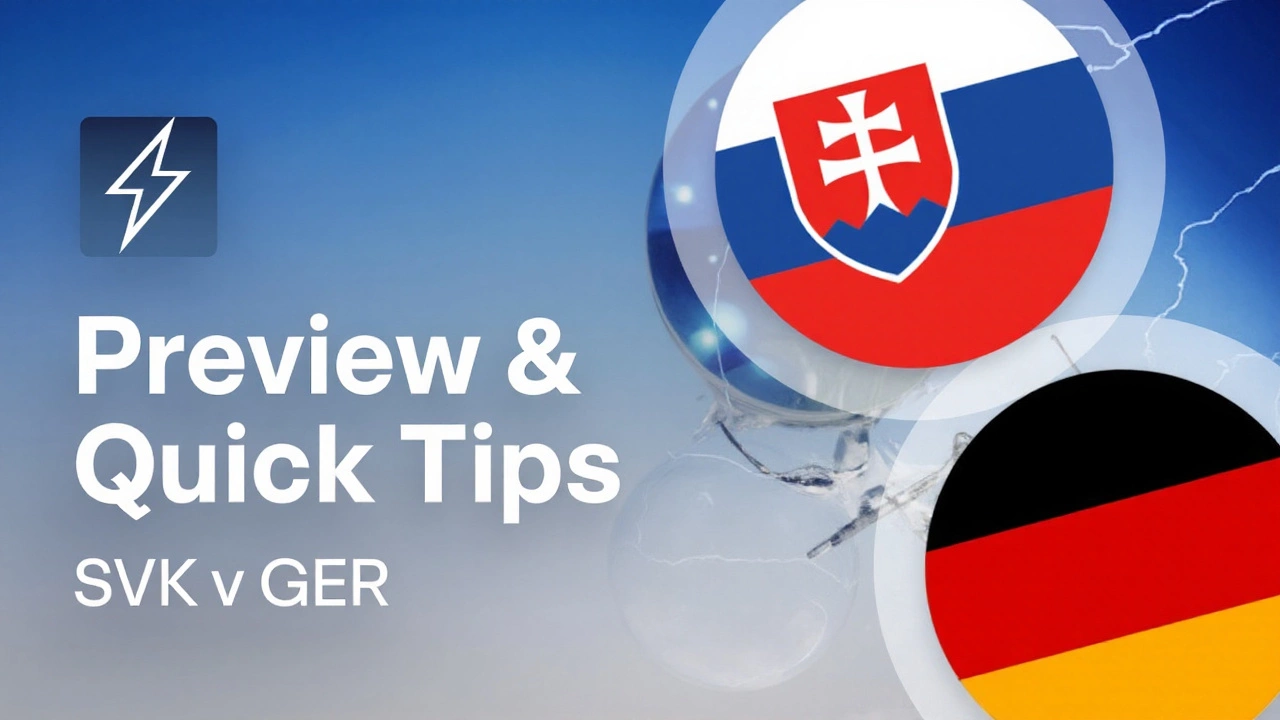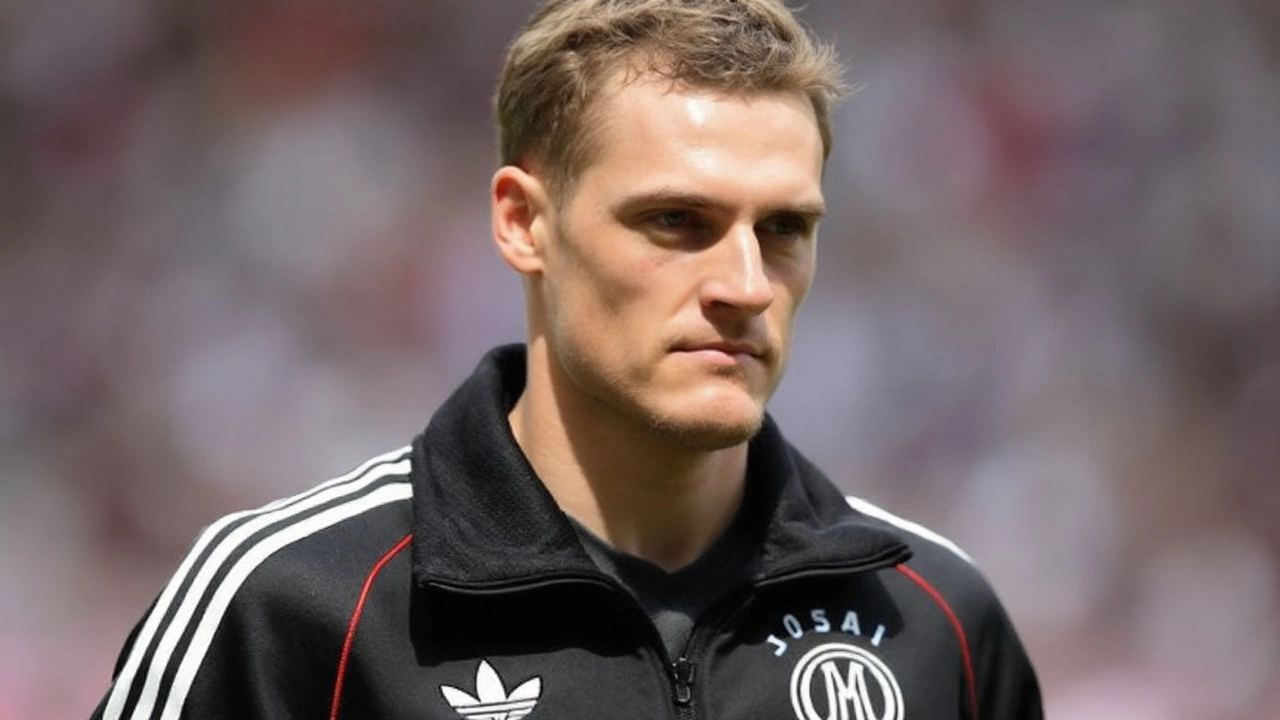High-stakes start: form, history, and why this opener matters
Slovakia vs Germany in Bratislava on Thursday, September 4, 2025, is not just a curtain-raiser for Group A—it’s an early stress test for both camps as 2026 FIFA World Cup qualifying begins. The Tehelne Pole Stadium should be loud, and the stakes are clear: early points set the tone in a short qualifying cycle, and hiccups now can snowball fast.
Slovakia arrives with something to prove. Their last international window was tough—beaten 4-1 by Greece, then edged 1-0 by Israel. That run sharpened the focus on defensive lapses and a lack of cutting edge in the final third. The objective tonight feels simple: be compact, counter with purpose, and take the game deep.
Germany’s recent stretch wasn’t smooth either. Julian Nagelsmann’s side led Portugal in the UEFA Nations League semifinals and still fell 2-1, then lost 2-0 to France in the third-place game. No silverware, no momentum. But Germany still brings depth, pace, and a clear favorite tag to Bratislava. They need a statement performance to steady the mood and make the group theirs from day one.
History leans heavily toward the visitors. Germany has eight wins in 11 meetings; Slovakia has three. Their last high-profile clash was at Euro 2016, a clean 3-0 German win in the last 16. That gap isn’t guaranteed to repeat, but it’s a reminder of the pedigree split—and why anything less than a convincing German display will raise eyebrows back home.
For Slovakia, the narrative is more personal. Their last World Cup appearance was in 2010. Getting back is the big dream, but it starts with small wins: a stable back line, clear roles in midfield, and efficient transitions. The home crowd won’t demand champagne football; they’ll want fight, good shape, and smart pressing triggers. If the game is on edge after an hour, Slovakia will feel they’ve dragged Germany into a battle on their terms.
Germany’s view is the mirror image. Nagelsmann has been open about chasing a fifth World Cup title—ambition that only rings true if qualifying looks routine. That means control in midfield, clean work at the back, and better in-game management than they showed against Portugal, where an early lead slipped away as the press lost bite and defensive spacing went fuzzy.
The venue adds its own layer. Tehelne Pole can be claustrophobic for visitors when Slovakia start fast. An early German goal would flatten the mood; an early Slovakian chance—especially off a set piece—could turn the place electric. Both teams know that managing the first 20 minutes might be half the game.

Team news, tactics, and the key battles to watch
Slovakia’s likely plan is tight and pragmatic. Expect two holding midfielders to shield the center-backs, full-backs asked to pick moments rather than bomb forward, and quick outlets to stretch Germany in the channels. Ondrej Duda’s experience—especially his composure under pressure—matters a lot here. He can drop between lines, slow the game when needed, and feed runners. Young forward Leo Sauer brings a different threat: speed, diagonal runs off the shoulder, and the kind of movement that can force Antonio Rüdiger or Jonathan Tah to turn and chase instead of stepping out to win duels.
Set pieces will be a Slovakian priority. They conceded five goals in those two June matches and will want to flip the narrative by making dead balls their friend. A few well-rehearsed routines, a crowd that senses vulnerability, and a good delivery can turn a hopeful night into something real.
Germany’s lineup choices point to a controlled, high-press approach. Joshua Kimmich is central to that—either as a deep midfielder dictating tempo or, if tactical needs shift, as a hybrid right-back stepping inside to build. Behind him, Rüdiger and Tah bring strength in the air and an improved passing range compared to previous cycles. They’ll be tested by direct balls and crossings aimed behind the full-backs.
Up front, Nagelsmann has variety. He can go with a classic No. 9 to pin the center-backs or go fluid with interchanging forwards to pull Slovakia’s shape apart. One subplot: the fresh faces. Newcastle striker Nick Woltemade offers size and link play; he can be a wall pass for midfielders arriving late. Young defender Nnamdi Collins adds pace and recovery defending—useful if Germany holds a very high line and needs insurance against counters. Either could debut if the game state invites it.
Formations? Germany have toggled between a 4-2-3-1 and a 3-4-2-1 under Nagelsmann. The call likely hinges on how much respect they show Slovakia’s counters. A back three offers protection and frees wing-backs, but Germany have looked more fluid in a back four when chasing control. If the visitors start in a 4-2-3-1, watch the double pivot’s spacing—too flat and they struggle to stop transitions; staggered well and they smother second balls.
For Slovakia, a 4-1-4-1 or 4-2-3-1 mirrors their priorities. If they sit in a mid-block, the No. 6 must track Germany’s roaming No. 10 and block cutbacks at the top of the box. When Slovakia break, they’ll look for early passes into the channels and quick support from a wide midfielder arriving into the box. The second man on the counter could be the difference between a pot-shot and a real chance.
Match rhythm matters here. Germany wants long spells of possession, eight-to-ten pass sequences that pull Slovakia side to side before piercing runs behind. Slovakia wants the opposite—short, sharp flurries, pauses to reset shape, and a stop-start tempo that keeps Germany from finding their passing gears. If the whistle blows often, that’s Slovakia’s tempo. If Germany string together patient moves without being clipped, they’re in control.
There are a few clear pressure points:
- The right half-space: If Kimmich steps inside, Germany can overload Slovakia’s left, creating 2v1s and low crosses across the six-yard box. Slovakia must shuffle in time and trust the back-post defender.
- Set-piece discipline: Fouls in wide areas are dangerous. Germany’s delivery is usually crisp. Slovakia can’t give away cheap restarts.
- Transitions off German corners: If Slovakia plan a run-from-deep routine, Germany’s rest defense—usually two back with a midfielder screening—must be alert. One missed tackle and it’s a foot race.
Individual duels will shape the night. Rüdiger against Sauer’s runs is all about angles and timing. Duda’s calm on the ball versus Germany’s first press—especially if Ilkay Gündogan or a similar profile steps up—will set Slovakia’s ceiling in possession. On the other end, Germany’s No. 9 against Slovakia’s center-backs is less about goals and more about pinning; if the striker holds his ground and lays off cleanly, the visitors will live at the edge of the Slovakian box.
The mental side is huge. Germany’s Nations League exit after leading Portugal wasn’t about talent. It was about game control. If they get ahead here, watch how they manage subs and tempo. Do they slow the match down with longer spells on the ball, or do they leave it open and invite chaos? Qualifying rewards control more than spectacle.
For Slovakia, the first 15 minutes after halftime often decide these nights. If they’re still in it, belief grows and Germany can get frustrated. But if they concede right after the break, the gulf in squad depth starts to show as the game stretches. Expect Slovakia’s bench to include runners and ball-winners rather than creators; this is a night for legs and discipline.
We can also expect a physical edge. Germany will want to step into duels to stop counters at source. Slovakia must match that and avoid getting pinned by early yellow cards. A cooler head on the home side—knowing when to take a foul and when to hold shape—will be worth as much as a big save.
Speaking of saves, both goalkeepers will have different jobs. The Slovakian keeper will face shots through traffic and must manage low crosses and cutbacks. The German keeper may deal more with sporadic but high-quality chances—1v1s or whipped counters—where positioning and decision-making on when to rush out will be vital.
Weather and surface should be fine for a quick game, which suits Germany’s ball circulation. Slovakia can slow it with smart fouls and a few longer clearances to break rhythm. The ref’s tolerance level for contact will matter; if it’s tight, Germany benefit from set patterns and rehearsed routines. If it’s loose, Slovakia can turn it scrappy.
How could this tilt look in phases? Early on, Germany will probe down the right with overlaps and inside runs, looking for the low cross. Slovakia will answer with diagonal balls into the corners and second balls around the German area. If the visitors score first, they’ll try to squeeze the middle and deny Slovakia counter lanes. If the hosts nick the opener, the game flips: Germany’s full-backs push higher, and Slovakia’s wingers live for the turnover.
Beyond the white lines, the narrative weight is different for each camp. Slovakia want proof the last break was a blip, not a trend. A draw would be a result; a narrow win would be a statement the rest of the group would feel. Germany want no drama—three points and signs that the Nations League stumbles were lessons, not warnings.
Keep an eye on late-game decisions. If Nagelsmann turns to fresh legs like Woltemade to hold up play and bring midfielders into the box, it’s a sign Germany want to kill the game in the final third rather than sit deep. If Slovakia throw on pace and shift to a front two for the last 15 minutes, it means they see nerves they can exploit.
Finally, the head-to-head numbers hang over this one. Eight German wins in 11 meetings underline the pecking order, and that 3-0 at Euro 2016 is familiar footage for both sides. But qualifying nights have their own logic. One early chance converted, one set piece defended or missed, and the script changes. Germany’s plan is to make sure the game looks exactly like a favorite’s away win. Slovakia’s plan is to make sure it doesn’t.
